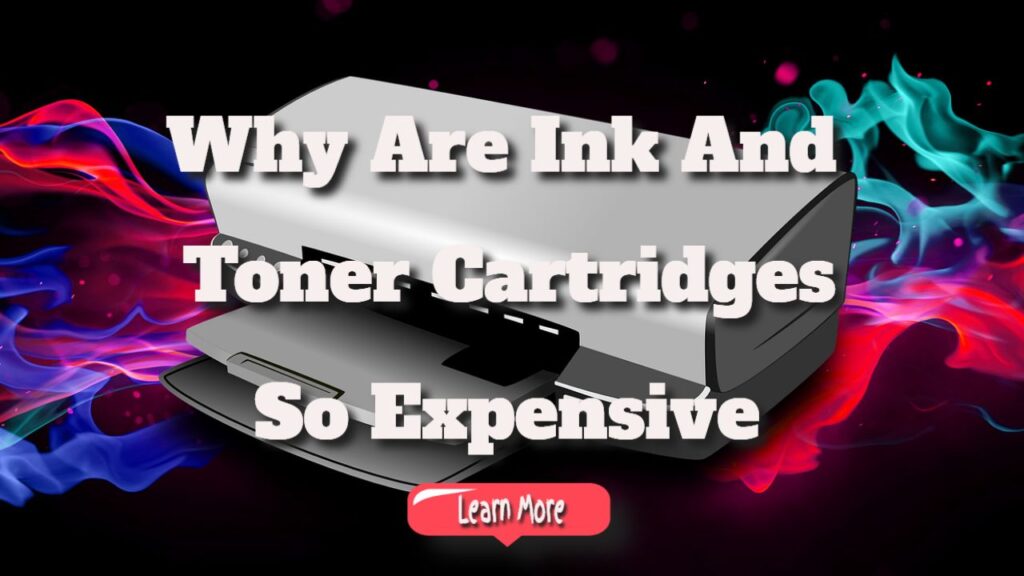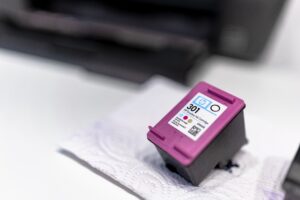Why Are Ink and Toner Cartridges so Expensive?
Why Are Ink And Toner Cartridges So Expensive: If you own a printer, you know the harsh reality: printer ink is expensive (and so is toner).
But why is this the case?
Why are replacement cartridges more expensive than the printer itself?
The answers to these and other problems are right in front of you.
Why are ink cartridges so expensive?
Here’s a simple solution: ink cartridges are expensive, so businesses can profit.
The overwhelming majority of printers are sold at a loss. Rather than selling inkjet or laser printers, a manufacturer makes money by selling printing supplies.
Both the technology and the prices are completely under the manufacturer’s control.
What is the actual cost of printer ink?
In 2013, Consumer Reports discovered that ink in ink cartridges costs between $13 and $75 per ounce!
* That is more expensive than the world’s most expensive perfumes!
How much does a gallon of printer ink cost?
Let’s do some basic math.
A gallon of liquid in the United States holds 128 ounces:
128*[$13, $75] = [$1664, $9600]
A gallon of printer ink ranges from $1,664 to $9,600.
And $20 billion is consumed globally each year!
Not one billion, but twenty billion dollars!
Is printer ink prohibitively expensive?
Maybe.
When finding a solution, speed and simplicity are rarely sufficient. Ink cartridges are not less expensive for a variety of reasons.
Here are the seven most important factors contributing to ink’s exorbitant price.
1. Your printer is ready. Replacement ink is prohibitively expensive.
This is the fundamental business model that all printer manufacturers follow.
HP, Brother, Epson, Canon, and the other major printer manufacturers make very little money at retail. Some people even lose money.
However, printer ink is expensive!
Companies recognise that they will recoup their investment through replacements over the printer’s life.
Printers are frequently sold at or below cost, enticing customers with low prices. These businesses understand that most customers prefer original OEM printers to less reliable remanufactured and compatible third-party products.
This business model is also known as the “razor blade.”
A razor is cheap because the manufacturer makes money by selling replacement blades to consumers. Razor blades will always be in high demand as hair grows.
2. ink research and development
The high price of inkjet and laser printers is frequently attributed to R&D.
HP claims to spend $1 billion annually on research and development and to have over 4,000 patents on consumables such as laser printer toner and ink cartridges.
Cartridge production necessitates sophisticated machinery. Each type and brand of ink has its formula.
OEM cartridges are specifically designed to work with printers and copiers. This has a substantial impact on the price of replacement cartridges.
3. Ink is difficult
People have been using ink to draw since the 4th century BC, and it has been used to power computer printers since its invention. The production of ink is a complex process. The printing process is identical.
Some printer manufacturers, including Canon, Hewlett-Packard, and Lexmark, use thermal printing.
A thin filament runs through the printer cartridge chambers. When the filament is heated, a droplet of ink from the cartridge is forced through the print head and onto the paper, causing the ink to bubble.
An electric charge in Epson and Brother printers changes the shape of the piezoelectric material inside the cartridge. This sends a print pulse through the print head and onto the paper.
(Do you have issues with your inkjet printer? Learn how to unclog a print head!)
To avoid malfunctions, the most critical components – the ink cartridges – must be well thought out regardless of the device or process used.
Why is printer ink so expensive?
The human thought process is involved in technological design!
4. The best is more expensive.
Genuine OEM ink remains the best and safest option for printer owners, but quality comes with a price.
How much does printer ink cost?
Replacement cartridges for high-end inkjet printers may cost as much as the printer itself.
Yes, it is that expensive.
You can use compatible or remanufactured cartridges in place of OEM brand consumables, but there’s no guarantee that your printer will work properly.
While using compatible or remanufactured cartridges can save you money, remember that they typically have lower page yields and produce lower-quality prints.
It’s the same as filling your sports car with crappy gas, which causes it to sputter, backfire, and stall until the harmful gas is flushed out.
5. Supply and demand
Almost every office, including yours, has at least one, if not several, printers. As the use of home offices and homeschooling grows, many employees’ printing needs are being met by home printers.
Ink demand is consistently high and only slightly fluctuates. As a result, the cost of OEM ink will continue to rise.
Printer owners must shop for the best deals on genuine replacement ink, which is rarely available from big-box stores.
You’ll need to look for the best deal on replacement cartridges online. (Don’t worry, you won’t have to look very far!)
6. Specific knowledge
Ink cartridges are not interchangeable. Printer ink design is highly specialised, which raises R&D and manufacturing costs.
You must conduct extensive research when purchasing replacement ink cartridges for your printer.
To begin, you must identify the brand and model of your printer to purchase the correct replacement.
Furthermore, almost all cartridges are available in an XL version with a large capacity. These high-capacity cartridges can help you save money per page if you print frequently.
The majority of inkjet printers use four different ink cartridge colours: blue (C), red (M), yellow (Y), and black (K).
Printers that use three-colour all-in-one cartridges should be avoided. They waste ink when only one colour is used.
7. Printer cartridges are engineered to fail.
Printers are as well. Televisions, too. In addition to smartphones.
Today’s electrical devices are all built to last a certain amount of time.
Yes, printer manufacturers can manufacture electronics that will last for decades, but where is the profit?
We live in an electronic age where everything is disposable.
Unfortunately, potentially hazardous substances are frequently found in these electronics.
Make sure that your electronic waste is recycled correctly!
Increase the life of your ink and toner cartridges.
The print heads can dry out if you do not use your printer for an extended period. Once a week, use your printer, and once a month, perform routine maintenance (printhead alignment, nozzle test, etc.).
Store your ink and toner cartridges in a secure location. Store your supplies in a cool, dry place until you’re ready to use them.
Some fonts necessitate a more significant amount of ink than others. Arial may appear simple and clean at first glance, but it is a thirst quencher. Use Times New Roman, Courier, or Garamond to save paper.
The goal is to buy less and use more!
Consider switching to draught or grayscale mode to save black ink. For final draughts, only use the highest quality level.
Check your ink levels regularly! This has the potential to save your life! You don’t want to run out of ink while working on a big project! Make a plan ahead of time!
Alternatives to expensive ink and toner
Consider non-OEM printer ink and toner.
Although it may be difficult to admit, some high-quality non-original replacement inks and toners are available on the market.
We still believe that original imaging devices are the best imaging replacements. OEM cartridges offer superior image quality and page yield.
If you’re on a tight budget and willing to compromise on quality and page yield, one of the higher-quality aftermarket cartridges may be worth considering.
They may employ less expensive technology, but it will suffice in an emergency. You should do some preliminary research.
Refilling ink cartridges
We despise this idea! Cartridge refilling is a time-consuming and messy process. We’re not using syringes or rags!
Try it if you must, but you’ll discover that refilling ink cartridges is more trouble than it’s worth. Refilled cartridges are a no-go!
Consider your printing needs.
Don’t buy OEM replacement cartridges if you don’t need them. Reduce consumption of black text documents account for most of your print volume to save money.
Make the colour mode grayscale. Use less expensive cartridges the rest of the time and save the expensive OEM cartridges for printing family photos on glossy paper.
It is far better to plan ahead of time for what you may require in the future. The last thing you should do is rush to a retail store to buy replacement cartridges.
You can save money by planning your purchases ahead of time.
Automation of ink refilling programmes
Most printer manufacturers offer automated refill programmes in which you are welcome to participate.
While this may be a convenient and cost-effective solution for some, we’ve heard horror stories about expensive automatic refills and the difficulty in opting out of automatic ink refill programmes.
Why is toner so expensive?
Toner and ink are the same prices for the same reasons:
Supply and demand
Research and development
Specialization
Toner brand pricing strategies, as well as other factors discussed in this article
However, as more advanced technology, toner provides lower printing costs per page than printer ink.
Nonetheless, toner cartridge prices remain relatively high.
The post Why Are Ink and Toner Cartridges so Expensive? appeared first on https://gqcentral.co.uk







Comments are closed